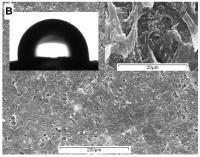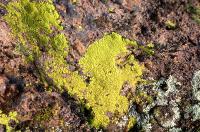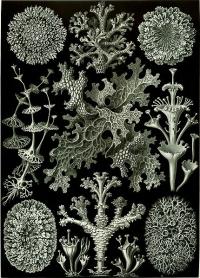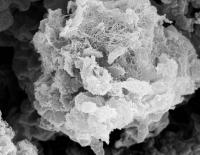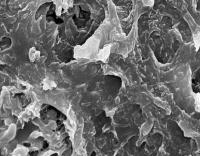Symbiotic lichens: Fungus and alga
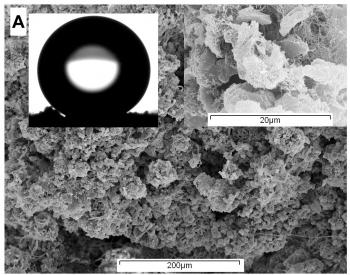
Lichens are symbiotic organisms consisting of a fungus and an alga; algae are very simple plants. They can live on hard surfaces without penetrating them, extracting most of their water and nutrients from the atmospheric environment. Investigations of a lichen, Lecanora conizaeoides, reveals that it is superhydrophobic, with a water contact angle of around 160° (see inset in panel A above). Electron micrographs of the lichen (panel A) show that it is rough, with structures of different sizes layered on one-another (unlike F. caperata, shown in panel B, which is not superhydrophobic). It uses a combination of hydrophobic compounds and multi-layered roughness to shed water effectively which, when combined with gas channels, produces a biological analogue of a waterproof, breathable garment. Gas transport to and from the algal cells in lichens takes place through a network of open channels. These are hydrophobic on their inner surfaces, which prevents them from flooding when the outer surface of the lichen is exposed to water. When the outer surface of the lichen is superhydrophobic these channels behave like those in Gore-Tex® and similar membranes, allowing gas exchange even during rainfall. This allows these lichens to photosynthesise when others cannot but reduces the total amount of water available to them by causing it to roll off their surface. Read more about lichens, and the role that their fungal partner may play in superhydrophobicity, in the publication below.
Fungi also show superhydrophobicity. The common mould that grows on coffee discarded in a cup floats because it consists of hydrophobic filaments (hyphae). When a droplet of water is placed on it the droplet will roll off, just as on a superhydrophobic leaf. It is unsafe to breathe in the spores of fungi, so do not try this one at home. The other plants are safer to try. The hydrophobicity enables the organism to float and to release spores into the air and greatly improves its gas exchange. It is the fungal partner of the lichen that generates the superhydrophobicity - the alga just benefits from the work.
Publication
![]()
A lichen protected by a superhydrophobic and breathable structure,
J. Plant Physiol. 163 (11) (2006) 1193-1197.
View postprint pdf

